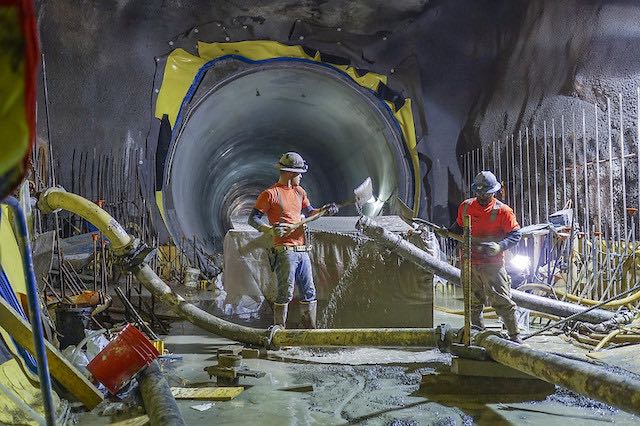New York’s Metropolitan Transportation Authority will soon go off a fiscal cliff, partly due to reduced ridership but also due to bad management. But never fear: New York legislators have a solution. They propose to tax Netflix and Uber to raise money to keep the subways and buses running.
One of the most expensive transit projects in the world, the Second Avenue Subway is expensive partly because the MTA spent more on consultants than it did on actual construction. MTA Capital Construction photo by Rehema Trimiew.
Taxing Uber makes kind of a warped sense, like taxing jet airliners in order to subsidize Conestoga wagons. But taxing Netflix? Just what does Netflix have to do with urban transit? Next thing you know, someone will propose taxing people for working at home because, you know, homes are “stealing” riders away from transit.
Meanwhile, it turns out that one of the projects I mentioned in yesterday’s post about 2024 capital improvement grants, a commuter-rail line in Philadelphia, has been cancelled (for now) because the Federal Transit Administration didn’t recommend it for funding. Apparently, even the FTA doesn’t think spending $548 million a mile for light rail makes sense — though that hasn’t stopped Los Angeles and Seattle from submitting even more expensive proposals. The project will probably be revived when Pennsylvania’s congressional delegation gets a little more clout than it has now.









New Yorks 2nd avenue subway has been on again, off again under construction since 1930’s.
Japan’s shonan Monorail is completely suspended hanging monorail. Was built in the late 60’s, opened by 1971 so it’s construction time was a mere couple of years, NOT DECADES. At a distance of 4 miles; 8 stations and run time 14 minutes at 45 mph. The number of passengers was 11 million a year in 2018 or 30,000 people a day. A tougher, firmer longer monorail running thru 2nd Avenue, 5th and 10th Avenue would cost LESS than 2nd ave subway put together; It could Move 60-100 thousand people a day per line and NO underground construction. 2nd Avenue is 8.5 miles long. So a twin monorail in Opposing directions could move 60-120k people per day with longer trains, 100,000 not to mention it’s columns and beams can be stylized to any architectural style you want in the city.
The Tokyo-Haneda Monorail has been operating since 1964. This eight-mile dual-beam system is privately owned and TURNS A PROFIT each year.
So parallel monorails could carry 300-400 thousand daily riders.
In total, despite being called subway, 40% of track is above ground. So havingvand buildi g above ground track…..isnt the issue.
Monorail ? uses rubber on steel/concrete so it’s extremely quiet even at 40 mph.
I guess theoretically a monorail in Manhattan or elsewhere in New York might work. There was a “feeler” proposal for such a thing in Lower Manhattan years ago. However, New Yorkers – especially those with influence as in Manhattan – would go bonkers at the thought of elevated trains outside their windows. You can get away with such things in Vancouver, Bangkok, Taipei, etc, that never had elevated trains before and have different cultural expectations. No politician in New York would dare propose it. And as the Antiplanner has suggested, spending money for its own sake, not transport, is the point behind these projects now. Fifth Avenue? That would have more opposition than Second even.
Part of the MTA’s loss of revenue is because of fare evasion, especially on the local buses, which is ironically where the best ridership recovery has occurred. It varies by borough, with The Bronx (the poorest) being the worst for buses. People simply walk on without paying, through the front and rear doors. The Select Buses have a proof-of-payment system, but there are not enough inspectors and months can go by without a fare check. Some of the worst ridership is on certain express bus routes, say The Bronx to Manhattan. The off-peak and reverse peak ridership is minimal, and there has to be cuts instead of running nearly empty buses.